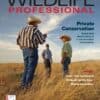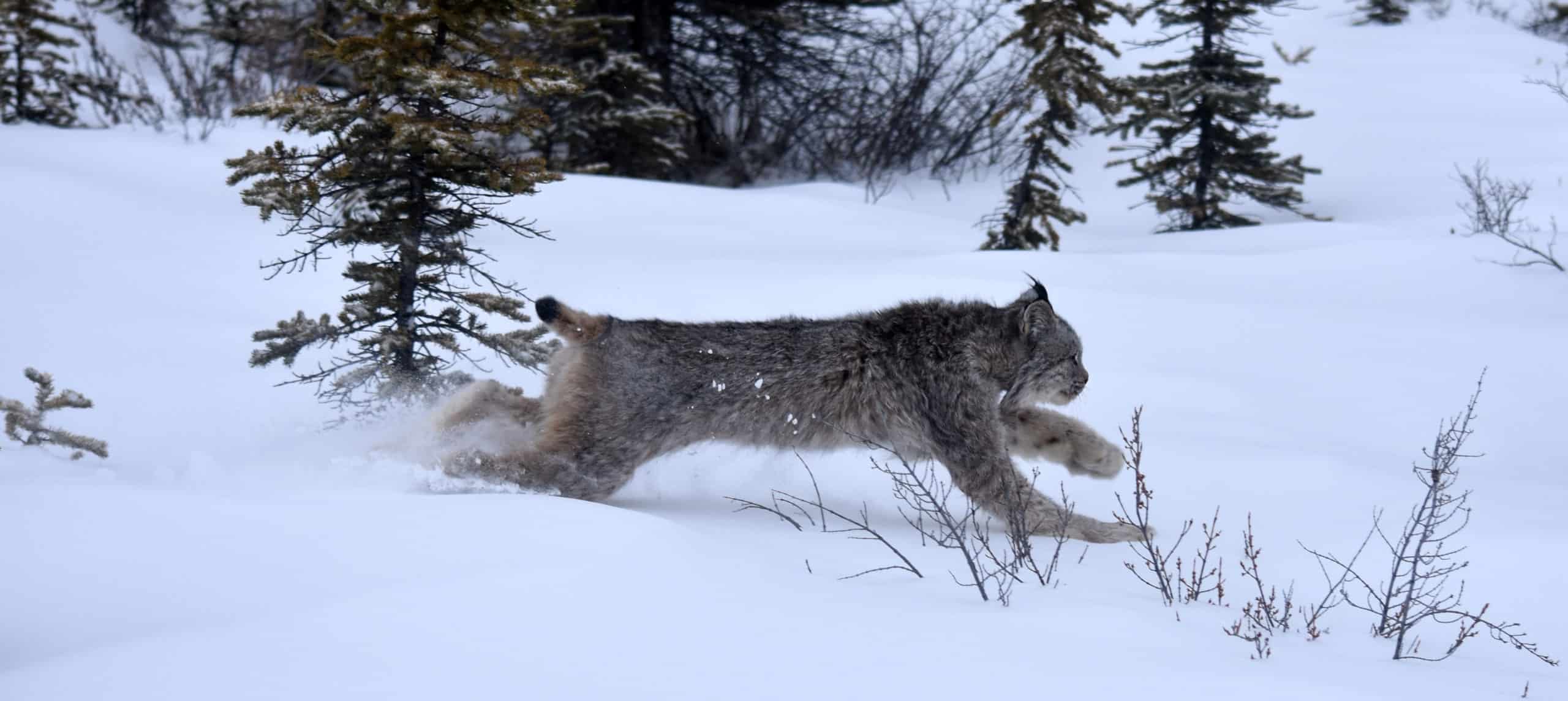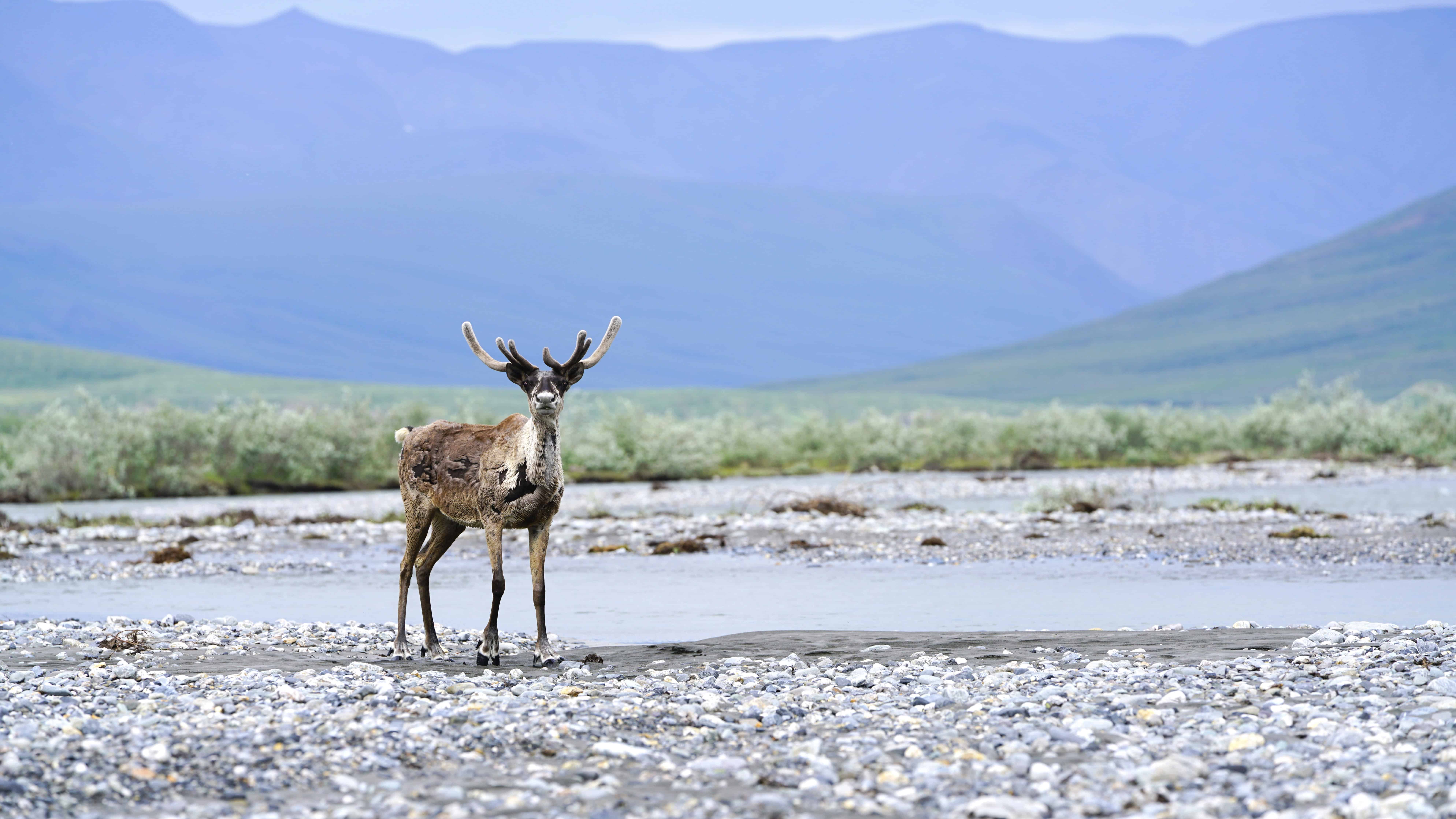Share this article
A peek into the lives of Canada lynx
Using Fitbit-like devices and sound recorders, researchers have found more information about the hunting behavior of a cryptic species that’s difficult to observe.
Allyson Menzies was a PhD student at McGill University on a project that has been going on for almost 40 years looking at the snowshoe hare (Lepus americanus) and Canada lynx (Lynx canadensis) predator-prey cycle in the Yukon territory. She and her colleagues had limited capacity to observe the species in the wild.
“A lot of old studies on population dynamics were done through trapping and telemetry, but we were really interested in behavior and responses to the environment and fine-scale stuff about the snowshoe-hare lynx cycle,” she said. Other more recent research has used telemetry and GPS data.
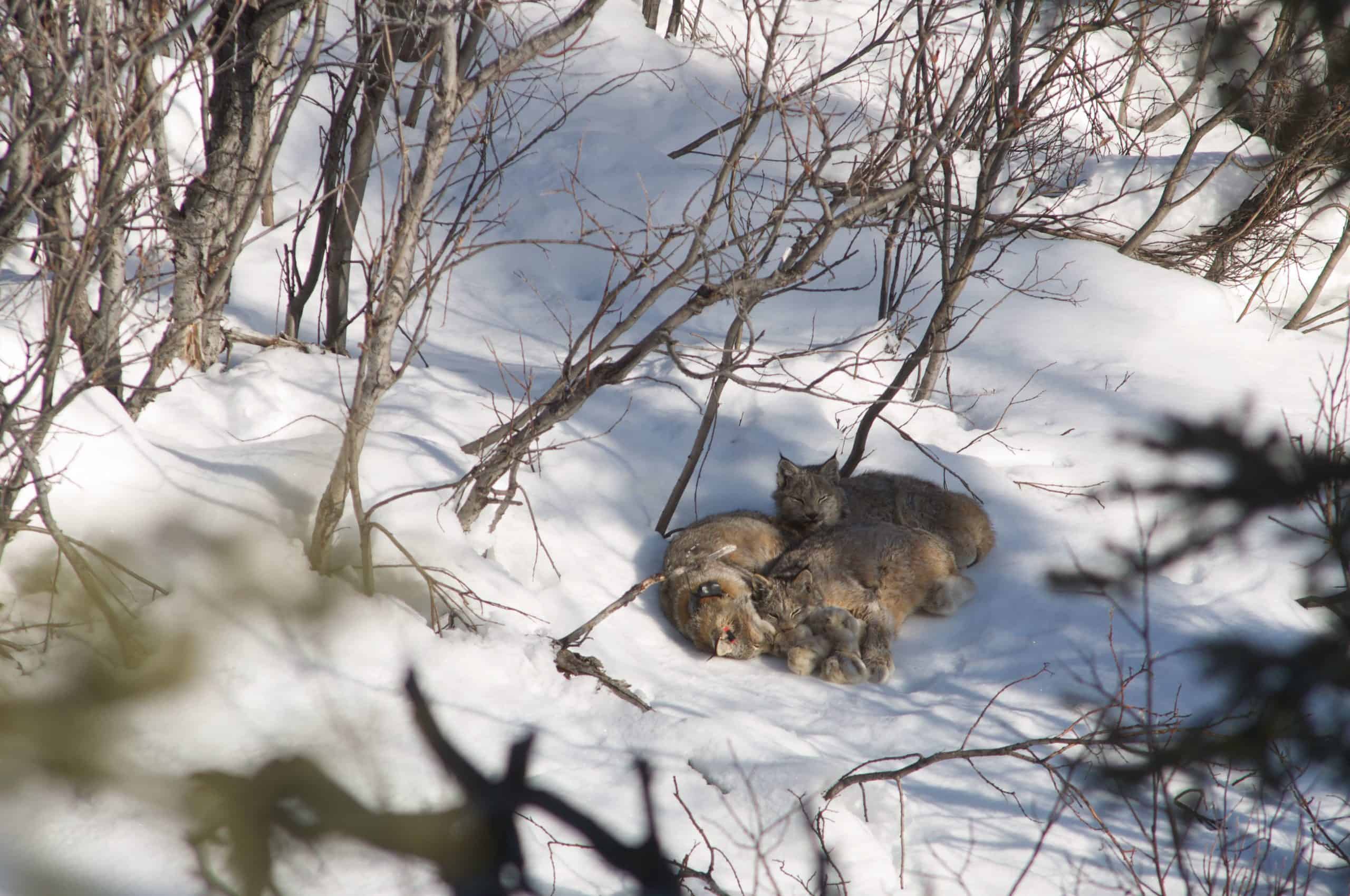
A family of Canada lynx. Credit: Emily Studd
Menzies and her colleagues recently published a study in Methods in Ecology and Evolution looking at alternative ways to observe the hunting behaviors and diet of Canada lynx. “As technology has gotten more compact and more affordable all over the world because of human demand on technology, we’re also moving that way for wildlife,” Menzies said. “This was at an interesting time when snowshoe hare and lynx were around and, all of a sudden, this new technology was emerging. It’s the perfect opportunity to apply some of these new devices to some questions we’re asking.”
The Canada lynx-snowshoe hare cycle is one that’s well-documented in the Yukon. Snowshoe hares go through a cycle where they’re extremely abundant and then almost completely disappear from the landscape every eight to 10 years. At the same time the hares disappear, the lynx population declines, since the hares are their primary prey. “This has been documented for centuries,” she said, “by Indigenous peoples and trappers.” Researchers suspect both food limitation and predation pressure from lynx are responsible for the crash of snowshoe hare populations.
The team wanted to look zoom in to look at hunting behavior during different seasons to see if different individuals have different behaviors and diets. “Does this behavior of lynx and hare change over the cycle,” Menzies wondered. “Once you can track individuals over time, you can answer a lot more fine-scale questions, not just on the population level.”
The research team fit accelerometers onto the animals along with recording devices, listening to the cats 24 hours a day for about three weeks. “We wanted a device that could capture lynx hunting and kills continuously regardless of the conditions. There are only five hours of daylight during winter at our field site, meaning that video/imagery would be less than ideal. Instead we thought that audio, which requires considerably less power to record and isn’t light dependent might do the job,” said Emily Studd, a former PhD student from McGill and co-author on the paper. “Considering that we make so much noise when eating things like chips, it seemed probable that chewing bones would be loud enough to be captured.” Most of the time, they picked up silence from cats napping. But when they analyzed the data, they were surprised by how many different sounds and much information these two pieces of technology gave them.
Listening to the crunch of bones and following their movements on accelerometers, they were able to pick apart the noises from prey to determine what the species was. They found that for some lynx, snowshoe hares comprised all of their diet. For others, the hares made up about half of their diet, alongside small mammals like red squirrels (Sciurus vulgaris). “It could just be random chance or it could be different cats are better or worse at hunting different species,” Menzies said.
The team also found differences between individuals in hunting success. On the audio, the scientists could hear when a lynx chased an animal and whether or not it was successful at killing it. That would sound like an animal being silent and suddenly doing short pounces or chases through the woods, making crashing and banging sounds, before ambushing their prey. The accelerometer also showed these bursts of movement. If there were crunching sounds at the end of that activity, they knew the cat was successful. But if there wasn’t any chomping noise, they assumed it was a failed hunting attempt.
The researchers also collected some data they weren’t looking for. “One of the highlights was, we actually heard lynx purring,” Menzies said, but she’s not sure why. “It’s hard to know for sure why lynx purr, but I suspect it’s for the same reasons as house cats: some sort of social signaling of recognition or comfort, perhaps,” said Rachael Derbyshire, a PhD student at Trent University and co-author on the study. “As a life-long owner of house cats, it’s hard not to see the parallels between lynx behavior and the behaviors of their domestic cousins.”
The study also reports instances of lynx calling back and forth to one another and growling at other animals possibly from a dispute about a territory or fighting over a carcass kill. “I find it really interesting to observe, through audio recordings, how lynx may interact with each other in social ways,” Derbyshire said. “I think we often underestimate the importance of social behavior in wild animals.”
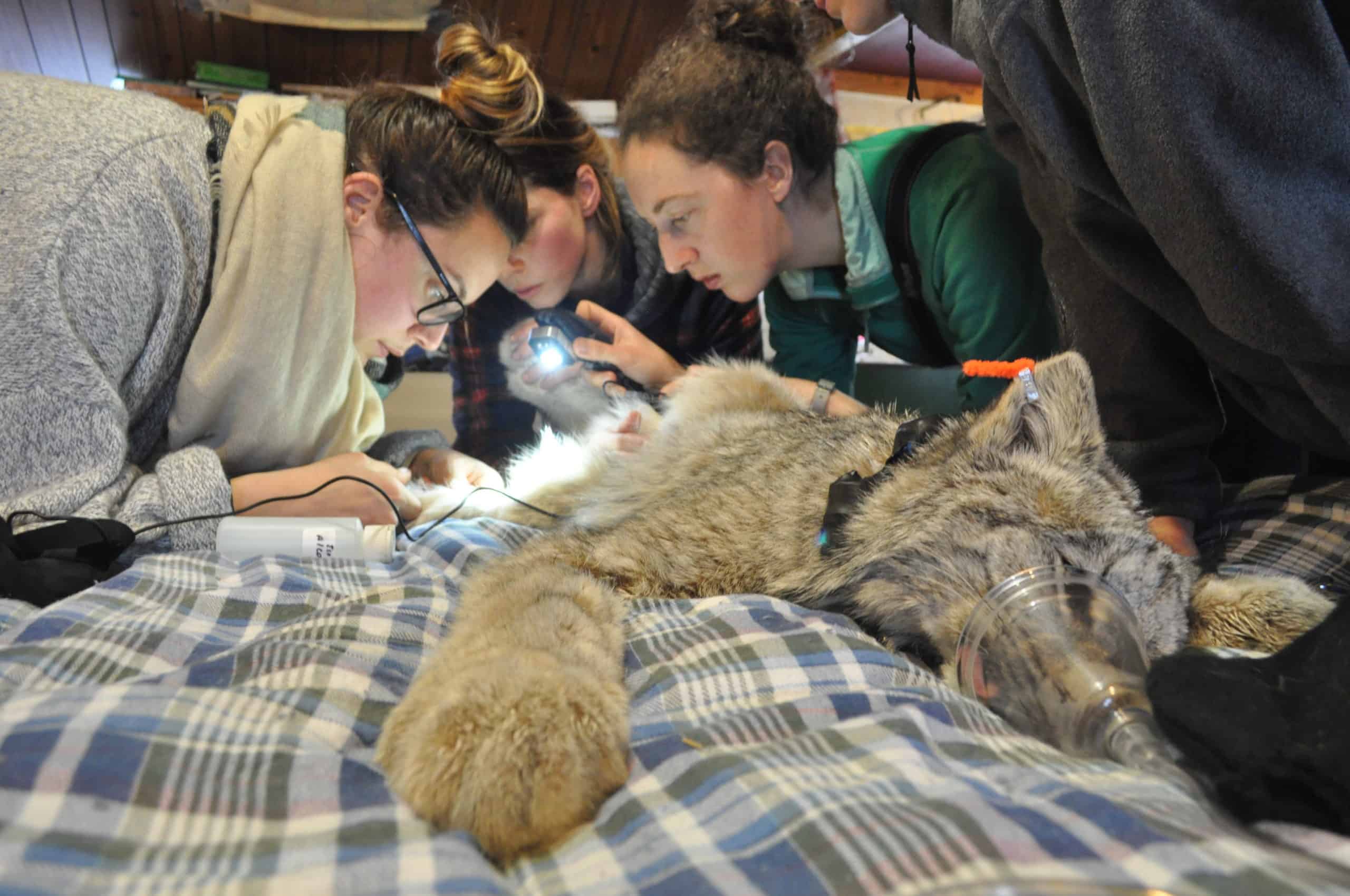
Authors of the recent paper Emily Studd and Allyson Menzies handle a Canada lynx. Credit: Kevin Chan
The team hopes others continue to use this type of technology as it proves to have been successful. They also said future research can dig into more questions about some of the research she and her team collected, such as the effects of climate change, development, or noise pollution on animal movements and behavior.
“The really exciting thing is that, because you can put these devices on the animals, you can release them into the wild without humans needing to be there to watch the animals,” Menzies said. “They collect data for you as they’re experiencing their own lives naturally and normally.”
Header Image: A Canada lynx running. Credit: Allyson Menzies

